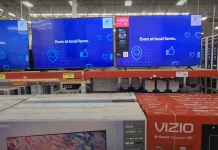DCI-P3 is a color gamut standard designed for accurate color representation. Developed by Digital Cinema Initiatives (DCI) and published in the SMPTE RP 431-2 standard, it was originally created to unify digital video reproduction technologies in movie theaters, ensuring compatibility between recording and display equipment.
Using the DCI-P3 color profile for cinematography
DCI-P3 is an extended color space that covers a wider range of colors than the traditional sRGB or RGB standard, especially in the red and green spectrum. Its main purpose is to provide accurate color reproduction, which is a requirement in cinematography where it is important to convey all nuances and depth of color.
Initially, DCI-P3 support was limited to professional equipment in digital theaters. Over time, manufacturers of monitors and televisions began to implement this standard in consumer devices, but the use of such a standard is very conditional. For example, Samsung claims that its QLED TVs provide 100 percent coverage of the DCI-P3 color gamut. However, such claims often raise questions. Verifying them without controlled laboratory testing is difficult.
Some TVs, such as the Samsung QN65Q60TAFXZA, use 8-bit panels with FRC to simulate an extended color gamut. In such cases, claims of 100 percent DCI-P3 coverage may be moot, as these panels rely on software manipulation and the inertia of human vision rather than their own hardware capabilities. This situation is reminiscent of earlier claims by manufacturers of “125% sRGB” support, which later turned out to be marketing exaggerations rather than actual achievements.
What does DCI-P3 support mean for the average user?
For most users, DCI-P3 support is not a critical factor. Understanding the nuances of different color standards requires specialized knowledge, and a TV that claims to cover 80% of the DCI-P3 gamut does not necessarily provide uniform color accuracy. For example, the screen may display 110% green but only 70% red, resulting in an imbalance in color reproduction.
The most reliable way to choose a TV or monitor is to evaluate the picture quality in person, such as in a store. While technical specifications are useful, they do not always give a complete picture of the device’s performance.






